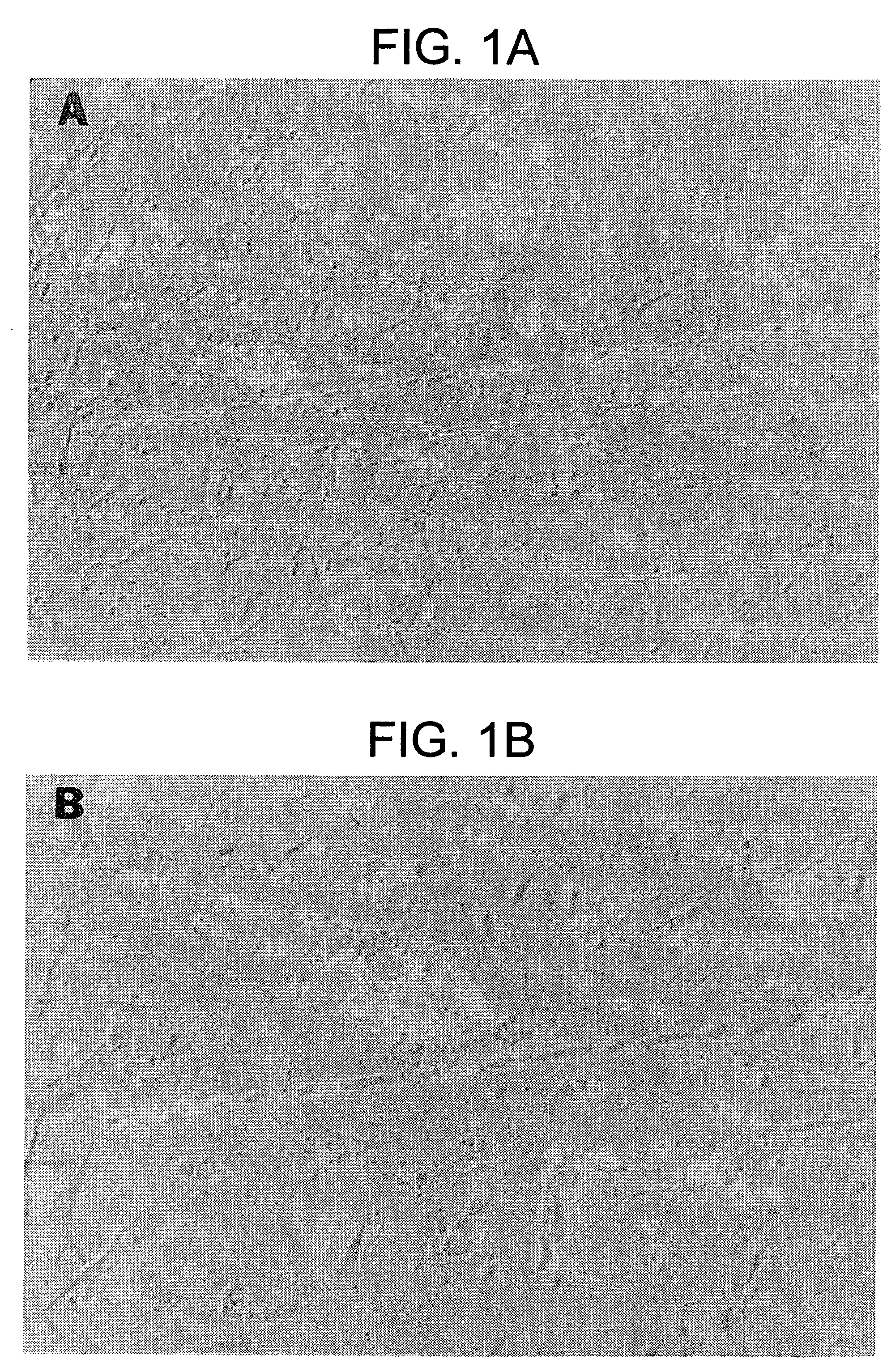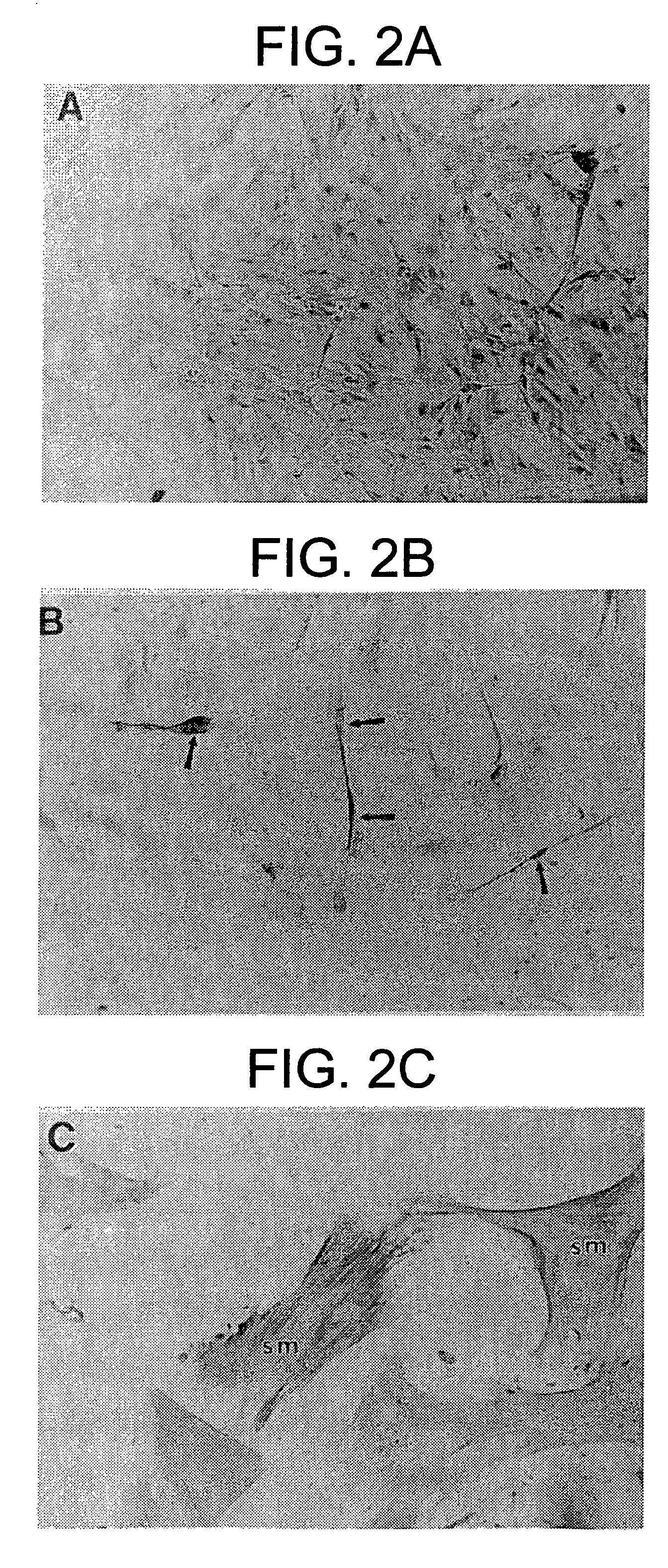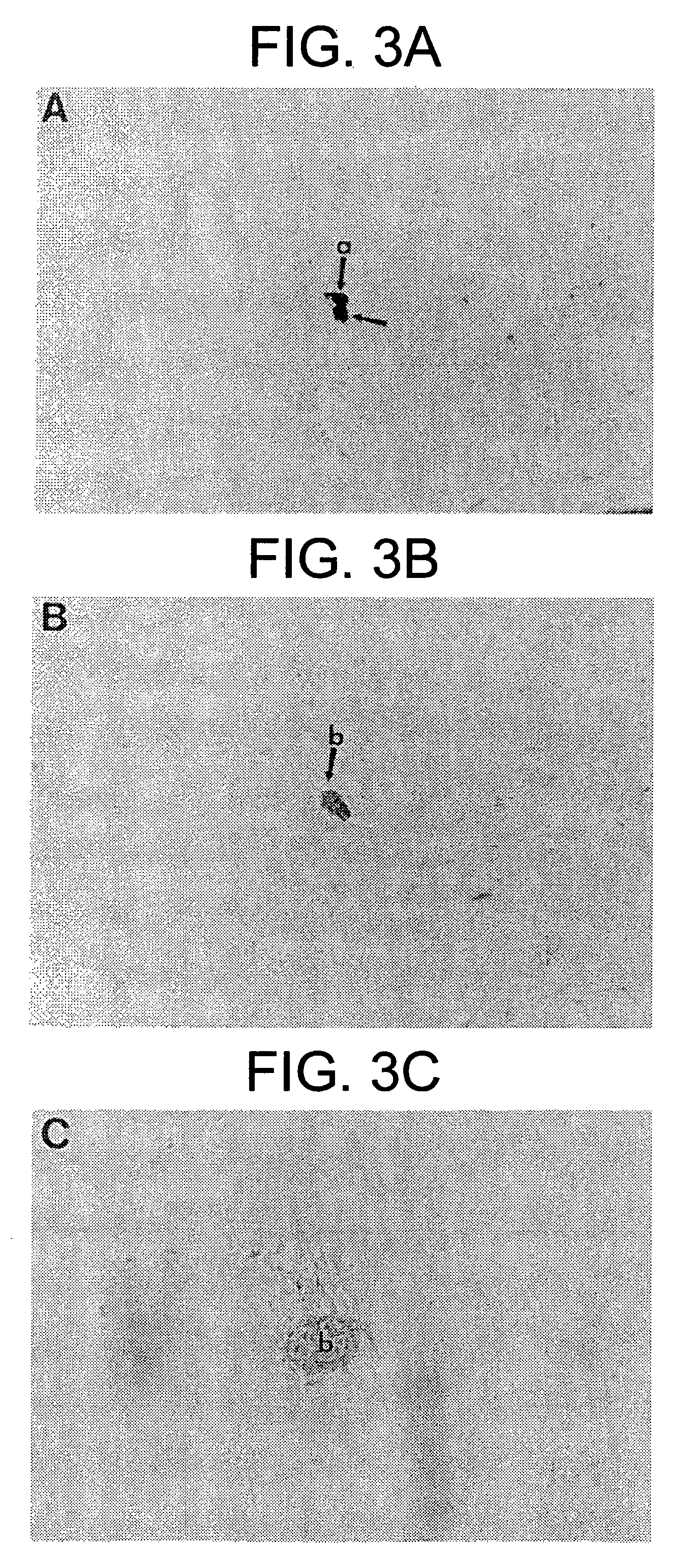Pluripotent embryonic-like stem cells, compositions, methods and uses thereof
a pluripotent stem cell, embryonic-like technology, applied in the direction of genetically modified cells, skeletal/connective tissue cells, drug compositions, etc., can solve the problems of affecting the ability to regenerate most human tissues damaged or lost due to trauma or disease, and affecting the ability to regenerate most human tissues in adults, so as to prevent the development or progression
- Summary
- Abstract
- Description
- Claims
- Application Information
AI Technical Summary
Benefits of technology
Problems solved by technology
Method used
Image
Examples
example 1
Phylogenetic Distribution
[0402] At least five species have been examined to date to determine phylogenetic distribution of mesenchymal stem cells (TABLE 1). All species examined, e.g., pre-natal avians (Young et al. 1991, 1992a,b, 1993, 1995, 1998a; Bowerman et al. 1991), pre-natal mice (Klausmeyer et al., 1994; Rogers et al., 1995; Young et al., 1998b), pre- and post-natal rats (Lucas et al., 1994, 1995; Davis et al., 1995; Warejcka et al., 1996), post-natal rabbits (Pate et al., 1993), and pre- and post-natal humans (Young et al., 1999) have resident populations of mesenchymal stem cells. These stem cells have the capability of forming multiple mesodermal phenotypes when incubated in the presence of dexamethasone and / or insulin. To date, 16 separate and readily identifiable cell / tissue phenotypes have been obtained, i.e., skeletal muscle, smooth muscle, cardiac muscle, articular cartilage, growth plate cartilage, hyaline cartilage, elastic cartilage, fibrocartilage, endochondral...
example 2
Isolation of a Population of Pluripotent Mesenchymal Stem Cells from Adult Rat Marrow
[0424] It is known that marrow stroma contains cells capable of differentiating into osteoblasts and chondrocytes. Marrow stroma has also been postulated to contain a population of pluripotent cells capable of forming other phenotypes. We have shown that cells capable of differentiating into a number of mesenchymal phenotypes, which we call mesenchymal stem cells (MSCs), can be isolated from rat skeletal muscle. We have applied these same techniques to determine if MSCs also reside in the stromal tissue of adult rat bone marrow. Bone marrow from 7 weeks old male rats was harvested and the adherent cells were cultured to confluence in EMEM+10% pre-selected horse serum, then trypsinized, filtered, and slowly frozen in 7.5% DMSO to −80° C. The cells were thawed, plated in the above media and treated with concentrations of dexamethasone ranging from 10−10 to 10−6 M for up to 5 weeks. Phenotypes observe...
example 3
Granulation Tissue Contains Cells Capable of Differentiating into Multiple Mesodermal Phenotypes
[0448] Previously, we have isolated cells from neonatal rat skeletal muscle capable of differentiating into a number of mesenchymal phenotypes when treated with a non-specific differentiating agent such as dexamethasone. We have termed these cells mesenchymal stem cells and have postulated they may be present in granulation tissue. In order to test this hypothesis cells were isolated from granulation tissue and assayed for their ability to form multiple mesodermal phenotypes. Stainless steel wound chambers were implanted subcutaneously into 7 week old male rats. They were removed 7 or 14 days post-implantation and scraped of adhering tissue. The cells were isolated by digestion with collagenase / dispase and cultured in gelatin-coated dishes in media with pre-selected horse serum until confluent. The cells were released with trypsin and frozen in 7.5% dimethylsulfoxide (DMSO) at −80° C., t...
PUM
| Property | Measurement | Unit |
|---|---|---|
| Temperature | aaaaa | aaaaa |
| Fraction | aaaaa | aaaaa |
| Volume | aaaaa | aaaaa |
Abstract
Description
Claims
Application Information
 Login to View More
Login to View More - R&D
- Intellectual Property
- Life Sciences
- Materials
- Tech Scout
- Unparalleled Data Quality
- Higher Quality Content
- 60% Fewer Hallucinations
Browse by: Latest US Patents, China's latest patents, Technical Efficacy Thesaurus, Application Domain, Technology Topic, Popular Technical Reports.
© 2025 PatSnap. All rights reserved.Legal|Privacy policy|Modern Slavery Act Transparency Statement|Sitemap|About US| Contact US: help@patsnap.com



